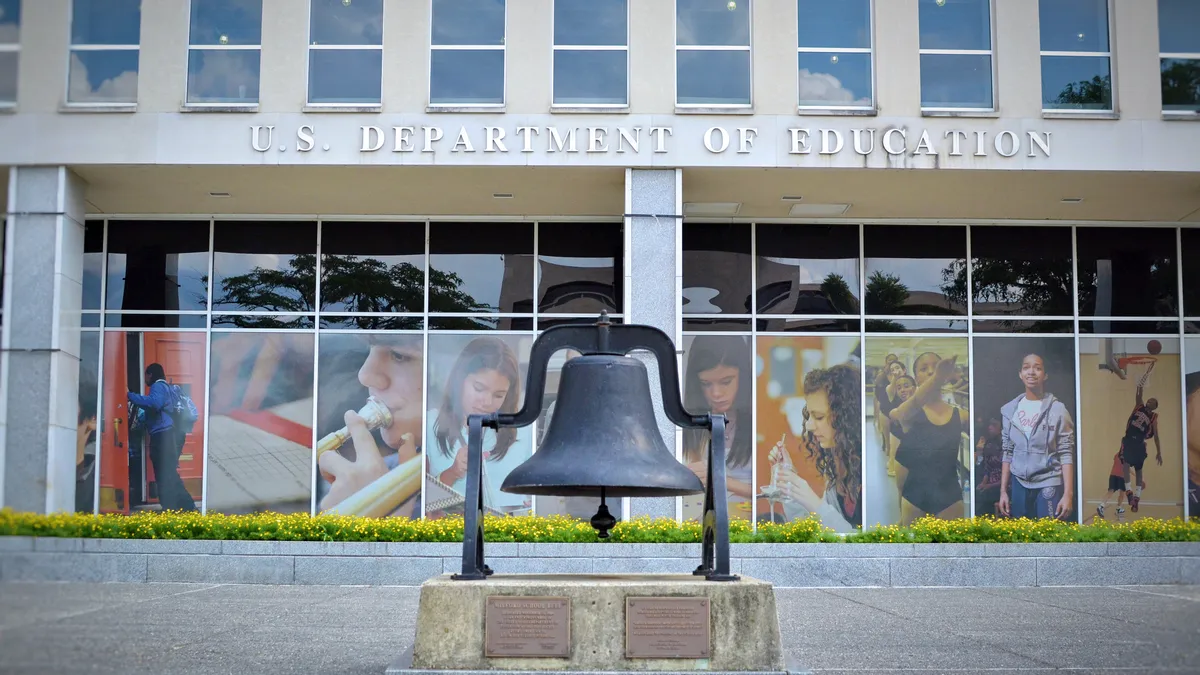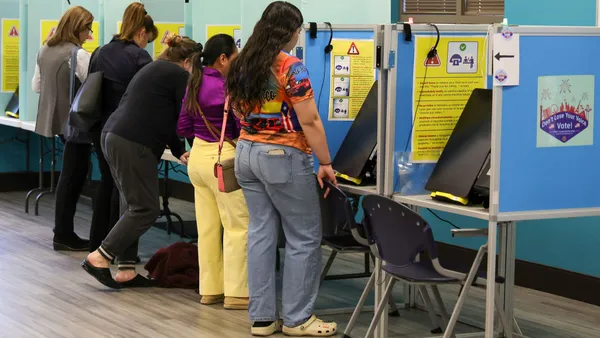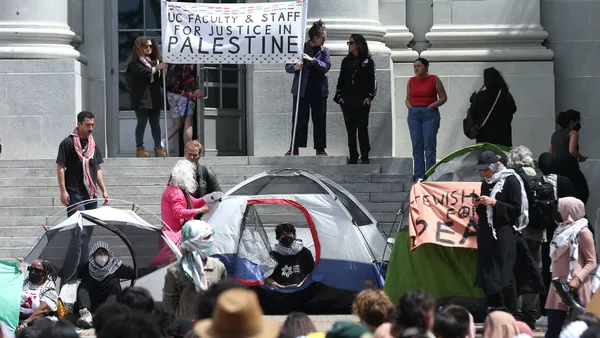Dive Brief:
- Lawmakers should simplify Supplemental Nutrition Assistance Program eligibility for higher ed students and make permanent temporary COVID-19 protections currently in place, according to a report from Ithaka S+R, an educational research nonprofit.
- In the first year of the COVID-19 pandemic, the federal government broadened student access to SNAP, the largest national program addressing food insecurity. However, those expansions are set to end shortly whenever officials declare the public health emergency over.
- The report, published in April, also recommends that lawmakers fund campus positions to connect students with state benefits. And state lawmakers could expand the types of educational programs that grant college students access to SNAP, such as by including career and technical education programs.
Dive Insight:
Higher ed students are ineligible for SNAP by default and traditionally have had to jump through hoops to prove eligibility. The difficulty often leads students who could receive support to miss out.
A little over half of students who would likely be eligible for SNAP did not participate in the program, according to a 2018 Government Accountability Office report. Between 2016 and 2018, half of surveyed California community college students experienced food insecurity, but only 22% of that group received SNAP benefits, according to the Ithaka S+R report.
Higher ed has increasingly focused on the issue of basic needs insecurity in recent years. Concerns mounted that college students fresh out of high school may not have the family resources available to help them pay for tuition, food and housing costs. And many colleges increasingly serve adult students.
In late 2020, a pandemic relief and spending package simplified higher ed qualifications, so that any student eligible for work-study programs or who had an expected family contribution of $0 could get benefits.
Before the expansion, college students had a few paths to receive SNAP benefits. For example, they previously qualified for SNAP by participating in work-study programs, not just by being eligible for them.
But access to work-study programs is uneven.
More than 7 million students received Pell Grants in 2018, according to the U.S. Department of Education. But only about 600,000 students were paid through a work-study program.
The coronavirus-era expansions are currently set to end after the government declares the public health emergency over. But the problems students face won't go away once the pandemic has subsided, according to James Ward, senior researcher at Ithaka S+R and co-author of the report.
"Codifying these rules permanently would help the students that are now able to access SNAP continue to have that level playing field," Ward said. "The pandemic certainly exacerbated basic needs issues but students were facing them before too."
Another preexisting way for college students to access SNAP is by participating in state-administered employment training and education. The report recommends a broader definition of the term "job training" so more career and technical programs at community colleges can check that box for at-risk students.
Creating policies that support low-income students will build a strong workforce by improving employment readiness and earning potential among students, according to the report.
"When you start addressing the non-academic student needs through wraparound service, you start seeing improvements and better graduation rates. There's no reason to think that addressing food insecurity would be any different," Ward said.













